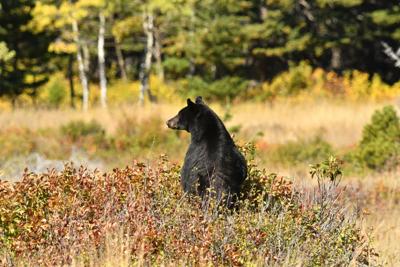During the early hours of Sunday morning, a 5-year-old girl living in the Grand Junction area heard a noise outside of her home. Curious to investigate the source, the child left the house, soon to be attacked by a large black bear. The black bear began to drag the girl from a bite on her backside until the child’s mother heard the commotion and was able to startle the bear into retreat.
The girl was rushed to a hospital for medical care, where she received “ dozens of internal and external stitches.” She’s currently not suffering from life-threatening injuries. Officials were able to locate the bear likely responsible for the attack. The bear was killed.
When first reported, this story was met with a loud response across OutThere Colorado’s social media platforms. The two most common reactions were (first) questions about why the child was outside of her home at 2:30 AM and (second) anger directed at the decision to put the bear down.
While both of these questions are pertinent to this case, this incident begs another – how can humans and animals coexist in wilder parts of Colorado?
If you’ve been following along with our recent posts, you’ve likely noticed a trend of dangerous interactions between animals and humans in mountain towns across the state. While details are still emerging with this Grand Junction bear attack case, an underlying issue among other similar occurrences seems to be a lack of understanding of best practices to follow while living in an area that’s also home to abundant wildlife. Unless humans suddenly stop expanding deeper into once-wild territory, this will continue to be a serious issue until proper education about human-wildlife interactions becomes widespread.
If you live in an area where there’s a lot of wildlife, here are a few basic guidelines you should follow. If you’ve got children, make sure they know the guidelines, too.
1. Lock up your trash.
One of the most common draws for animals in an urban setting is accessible waste. A mixture of smells, open trash will often attract hungry critters ranging from raccoon to bears. If you live in an area where wildlife sightings are common, use a locking mechanism on your trash cans or keep them in a place where animals can’t reach them.
2. Don’t leave edibles unattended.
Leaving food out overnight is a surefire way to attract unwanted critters. Always put food waste that might be outside in the proper receptacle prior to heading to bed. Note: yard items like bird feeders can also attract unwanted wildlife. If you live in an area where wildlife is common, consider skipping the bird feeder or picking a feeder that makes accessing the food for non-airborne creatures extremely difficult.
3. Utilize animal deterrents.
Fences, spotlights, and scent-based animal repellents can all be effective when it comes to keeping animals out of your yard. That being said, make sure you’re picking the right product for the job. For instance, if you plan on using a fence as a deterrent, it probably needs to be at least 8-feet tall and should extend underground if you’re hoping to deter digging animals like coyotes or raccoons.
4. Know how to react in an interaction.
Never approach a wild animal. Don’t try to feed them. Don’t try to pet them. Don’t try to capture a selfie. If you spot a wild animal, keep your distance. If the animal seems annoyed or aggressive, remove yourself from the situation immediately.
5. Be a smart pet owner.
Hungry predators can be attracted to homes with house pets. If you’ve got a dog and live in an area where big wildlife is common, keep an eye on them while they’re in the backyard. Don’t leave them out and unprotected overnight. Another important guideline pet owners should follow is to keep pet food inside the house.
6. Lock your doors and windows.
In instances where a wild animal is able to enter a house, it’s often due to a factor that makes entrance easy. As animals continue to adapt to life in an urbanized setting, reports of wildlife being able to operate handles are becoming more common. Here’s an example of a bear that even managed to lock itself inside a parked car. By making sure doors and windows are securely shut overnight, one is able to prevent entrance of even the boldest of creatures. Good locks can also be an important consideration for parents with small children, as child-proof locks can prevent children from getting outside without supervision.
As Colorado’s population continues to grow, humans will continue to expand into formerly undeveloped areas. A side effect of this growth is that humans and wild animals will continue to interact. This makes education about wildlife safety extremely important in order to prevent dangerous animal encounters when possible.








(0) comments
Welcome to the discussion.
Log In
Keep it Clean. Please avoid obscene, vulgar, lewd, racist or sexually-oriented language.
PLEASE TURN OFF YOUR CAPS LOCK.
Don't Threaten. Threats of harming another person will not be tolerated.
Be Truthful. Don't knowingly lie about anyone or anything.
Be Nice. No racism, sexism or any sort of -ism that is degrading to another person.
Be Proactive. Use the 'Report' link on each comment to let us know of abusive posts.
Share with Us. We'd love to hear eyewitness accounts, the history behind an article.